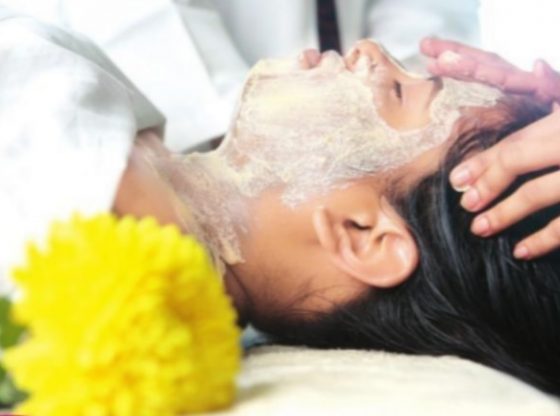
It is that time of the year again when the skin starts getting flaky and dryness leads to itchiness. Dermatologists will ask you to keep your skin hydrated, beauty experts may extol the virtues of a good moisturiser, and your grandmother may divulge a few kitchen secrets.
The largest external organ in the body is, by far, the most important as well. “Humidity level drops during winters making the air dry, which in turn results in sucking the moisture out of the skin. This leads to dryness and flakiness,” says Dr Jangid, dermatologist and hair transplant surgeon.
DERMA NOTES
The skin’s top layer has natural oils, which reduces during cold weather. Room heaters and hot water baths further make our skin dry. And with age, dryness escalates. Studies have shown that skin troubles like eczema or psoriasis flare up during winter There are instances in which people face skin cracking due to harsh winds and dry indoor heat.
Dry skin has a tendency to itch. Painful cracks appear in heels, even lips crack and bleed, blood circulation to hands and feet diminish and the fingers and toes may turn bluish. “A condition called chilblains develops. Small, very itchy blisters may occur on fingers and toes,” says Dr Hemant Sharma, consultant, dermatology, BLK Super Speciality Hospital.
This season is neither easy on babies. “They have thin skin, which loses moisture,” says Rajesh Vohra, CEO, Artsana India in assistance with Chicco Osservatorio Centre. “Massage them with paraben-free baby oil or rice bran oil,” he adds.
Beauty experts maintain that the overuse of any skincare product will not just dry up your skin but will also leave you with a nasty rash. “Avoid any clay masks, harsh soaps or anything with a strong fragrance,” says Dr Blossom Kochhar, founder and chairperson of the Blossom Kochhar Group of Companies.
DAILY REGIME
While you can’t control the fluctuating temperature, you can easily adopt healthy practices. “Pick cream-based moisturisers instead of lotion-based ones as it’s necessary to seal the moisture in. Adding an emollient moisturiser with another moisturiser is necessary,” says Dr Jangid.
Dr Kochhar says one must follow the CTOM regimen in the morning and at night. “People are aware of cleansing, toning, moisturising steps, but often tend to miss out an important step applying oil according to skin type,” she says. She suggests using a creamy aloe vera cleanser, avoiding heavy exfoliation and using a non-alcoholic toner. “Face oil is important; finish off with an almond nourishing cream for normal to dry skin or an almond moisturising lotion for dry skin.”
Doctors advise using soap sparingly. “Use soaps with glycerin or moisturisers, and humidifiers if you use room heaters for long. Those with a tendency of chilblains must wear gloves and socks,” says Dr Sharma. For small children, it’s important to stick to baby skin products. “It should contain natural ingredients like rich almond milk, rice bran oil and Vitamin E for adequate moisturisation,” says Vohra.
DIET MATTERS
Besides using good cosmetics, it is necessary to eat healthy food. “Almonds are rich in Vitamin E and antioxidants, carrots protect skin from UV-damage as they have beta-carotene and lycopene, and spinach has iron,” says Dr Jangid. Have green tea as it protects the skin from free radicals due to antioxidants in them.
You must also stock up on raw walnuts. “It helps combat free radicals that lead to skin damage. Walnuts not only play a primary role in keeping pimples at bay by acting as an anti-inflammatory, they also a health powerhouse of Omega-3 fatty acids and antioxidants,” says Kochhar.
Papaya and honey face packs are rich in antioxidants, honey makes the skin supple. Almond and milk pack reduces the skin’s dryness. “Opt for a yogurt and honey pack as it prevents trans-epidermal water loss and increases skin elasticity. Lemon and honey, if used together, protects dryness and itchiness,” says Dr Jangid.
[“source=indiatoday”]
